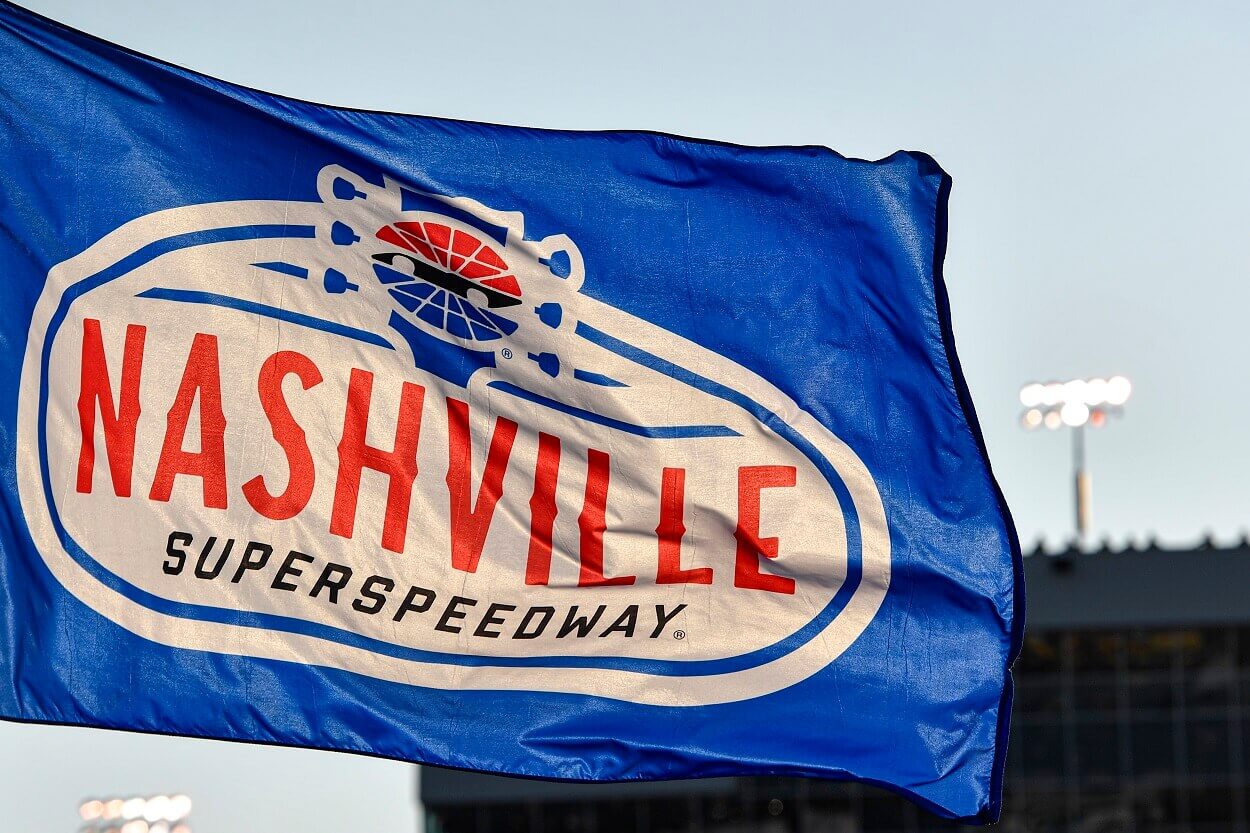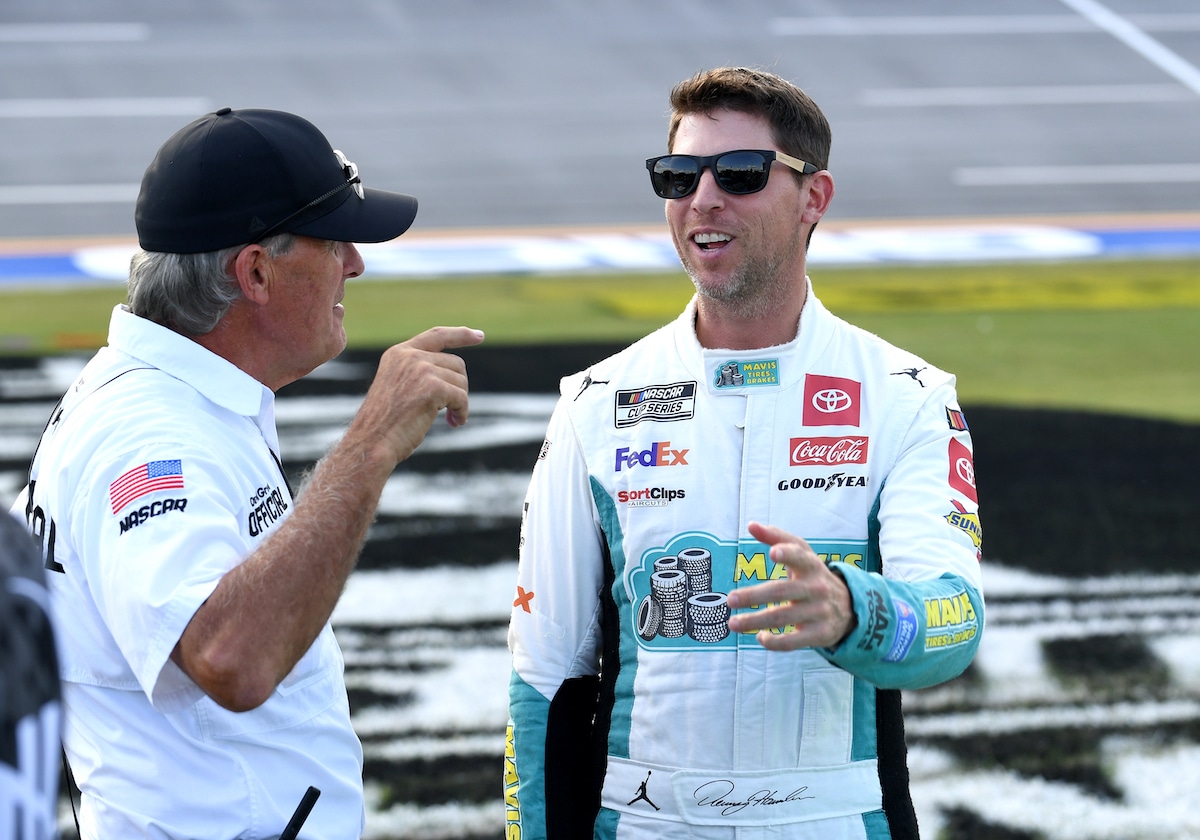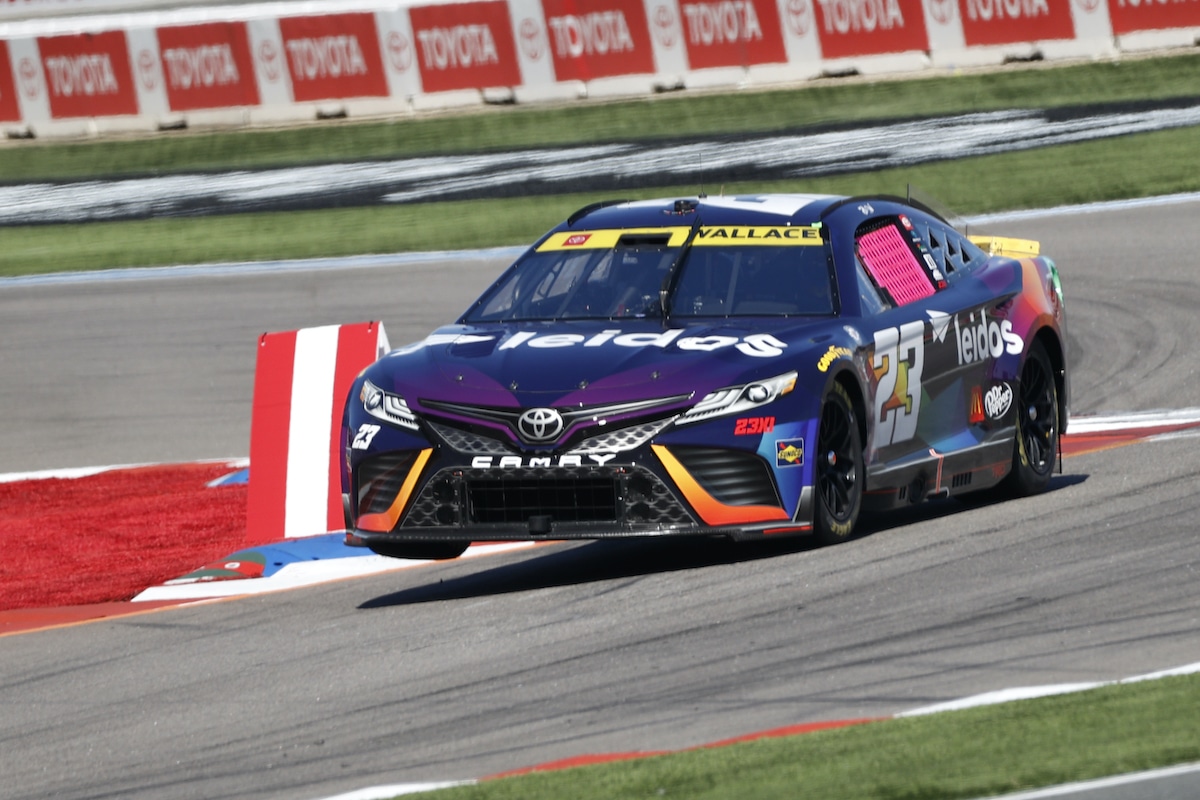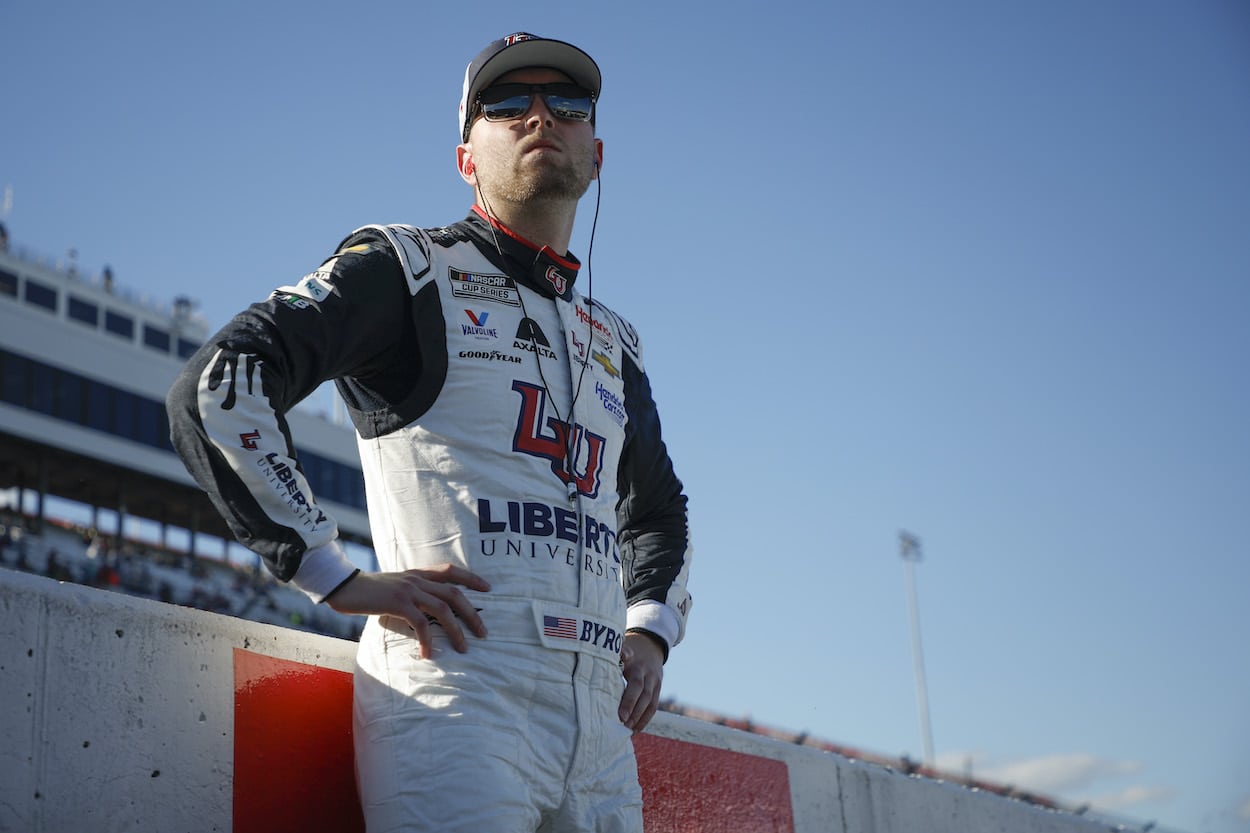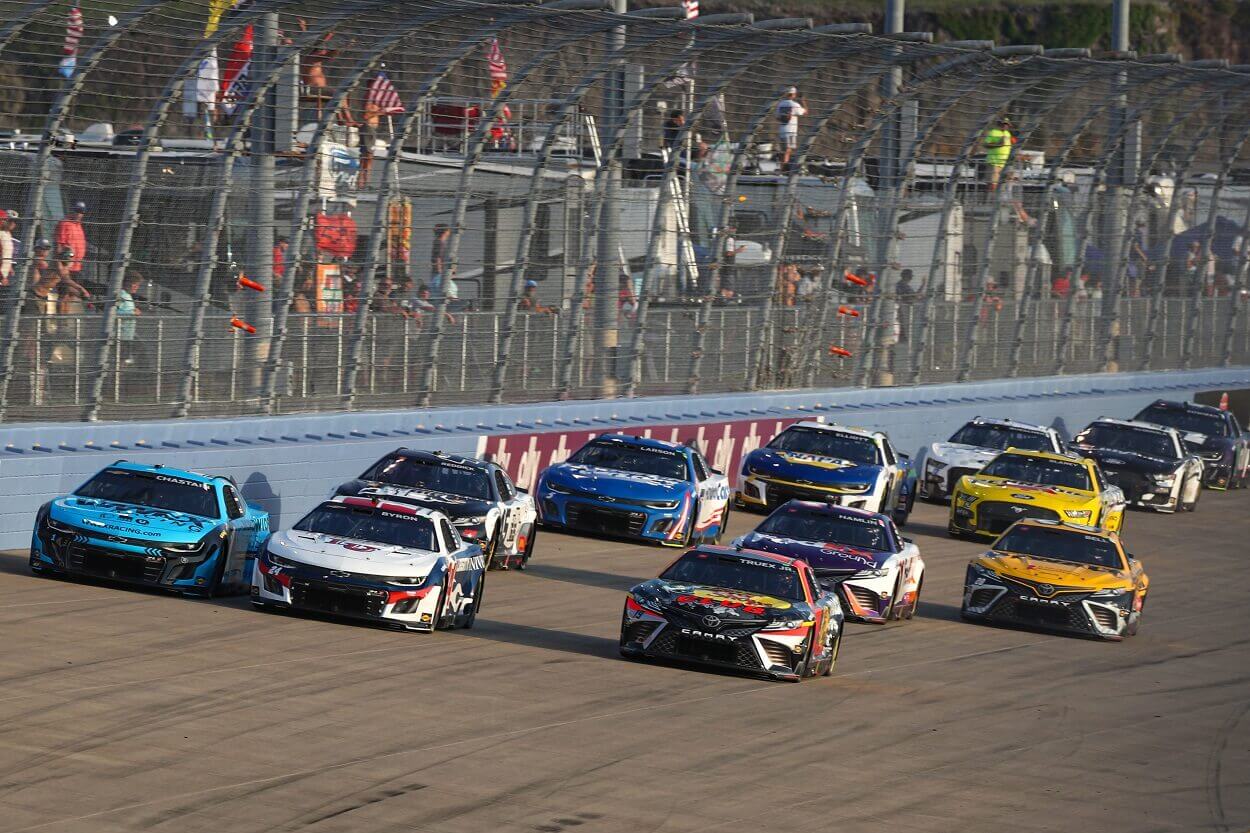
Nashville Was Yet Another NASCAR Race Stifled by an Easily Solvable Problem
The NASCAR Cup Series race this past Sunday at Nashville Superspeedway had an interesting winner and relatively close competition throughout. But it was yet another race that lacked any sort of strategy nuance thanks to a rule NASCAR implemented six years ago but has mercifully started to back off of this season.
NASCAR introduced stage breaks to all its national series races beginning in 2017. The stages chop races up into three segments of varying lengths, with mandatory caution flags at the end of each of the first two stages.
The sanctioning body awards points to drivers inside the top 10 for each stage in an attempt to keep drivers from riding around until a final push late in the race. The stage breaks also give NASCAR’s television partners guaranteed cautions during which they can run several of the same commercials fans get treated to during green-flag runs.
Stage breaks have made pit strategy a formality in NASCAR
However, the stage breaks often take most of the strategy options away from crew chiefs.
Sunday’s race, for example, had stage lengths of 90, 95, and 115 laps to make up the 300-lap event. With tire falloff of minimal concern, teams could run 70-75 laps on a tank of fuel. That meant teams had to pit only once during each stage to make it through the race, and that’s precisely what they did.
The majority of the field split the first stage in half and pitted around Lap 45. They were in the process of doing the same in Stage 2 when Tyler Reddick had a tire fall off of his car, which caused a caution during the middle of a pit-stop cycle. Four drivers had yet to pit and cycled to the front of the field during the caution since most drivers were a lap down after their pit stop before Reddick’s incident.
A wreck happened on the ensuing restart when Brad Keselowski was unable to get up to speed properly, but that did not affect anybody’s strategy. Stage 2 then finished without incident, and the final stage was uninterrupted to the finish. Nearly every team made its final pit stop about halfway through the final stage, and the finish was left to the drivers on the track.
That scenario for a finish is not entirely bad. Fans often want to see the top drivers battle for the win in the closing laps without gimmicky interruptions. The problem in these types of races, however, is that there was no intrigue to get to that point.
The top three finishers of Ross Chastain, Martin Truex Jr., and Denny Hamlin combined to lead 230 of the 300 laps. Reddick had led the final 33 laps of Stage 1, but his tire incident put him two laps down and ended his ability to contend for the victory.
Each of the top-three finishers might have ended up in those positions regardless, but other teams would have at least had a chance to shake up the running order if the stage lengths did not essentially mandate when they pitted.
NASCAR has eliminated stage breaks at road courses this year
NASCAR executives realized this issue happened all the time in road-course races and made a change for those events this season. Teams used to short pit in the final laps before the end of a stage at road courses, which would set them up to be at the front of the field on the next restart.
That became the only effective strategy, so NASCAR eliminated the stage-break cautions at road-course races this season. The sanctioning body still awards points to the top 10 drivers at the end of a stage, but it now allows the race to remain under green-flag conditions, which opens up all kinds of strategy possibilities for teams to utilize.
The change has not affected the winners of the first two road-course races this season. Tyler Reddick still won after a dominating performance in March at the Circuit of the Americas, and Truex cruised to a win a few weeks back at Sonoma Raceway even though other teams made varying strategy calls to try to position their driver in front.
Stages have improved the intensity of the early portions of many races in recent years, but the extra two mandatory cautions have not reduced the number of commercials TV networks run during green-flag portions of races.
The lack of stage breaks has enhanced the strategy aspect of road-course races and could do the same at other types of tracks if NASCAR expands the idea in the coming years. The stage-point bonuses still provide an incentive to race hard early in events without killing the strategy options teams would otherwise have at their disposal.
NASCAR now has an opportunity to have the best of both worlds if it universally keeps the stages without the breaks.
